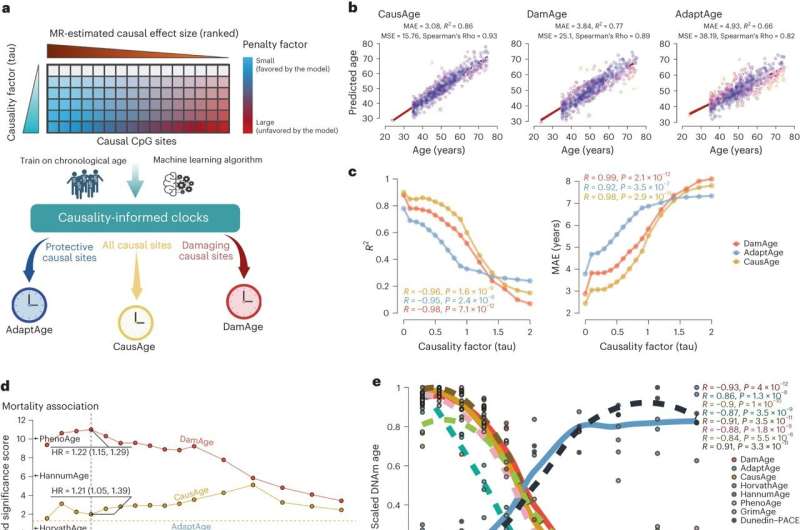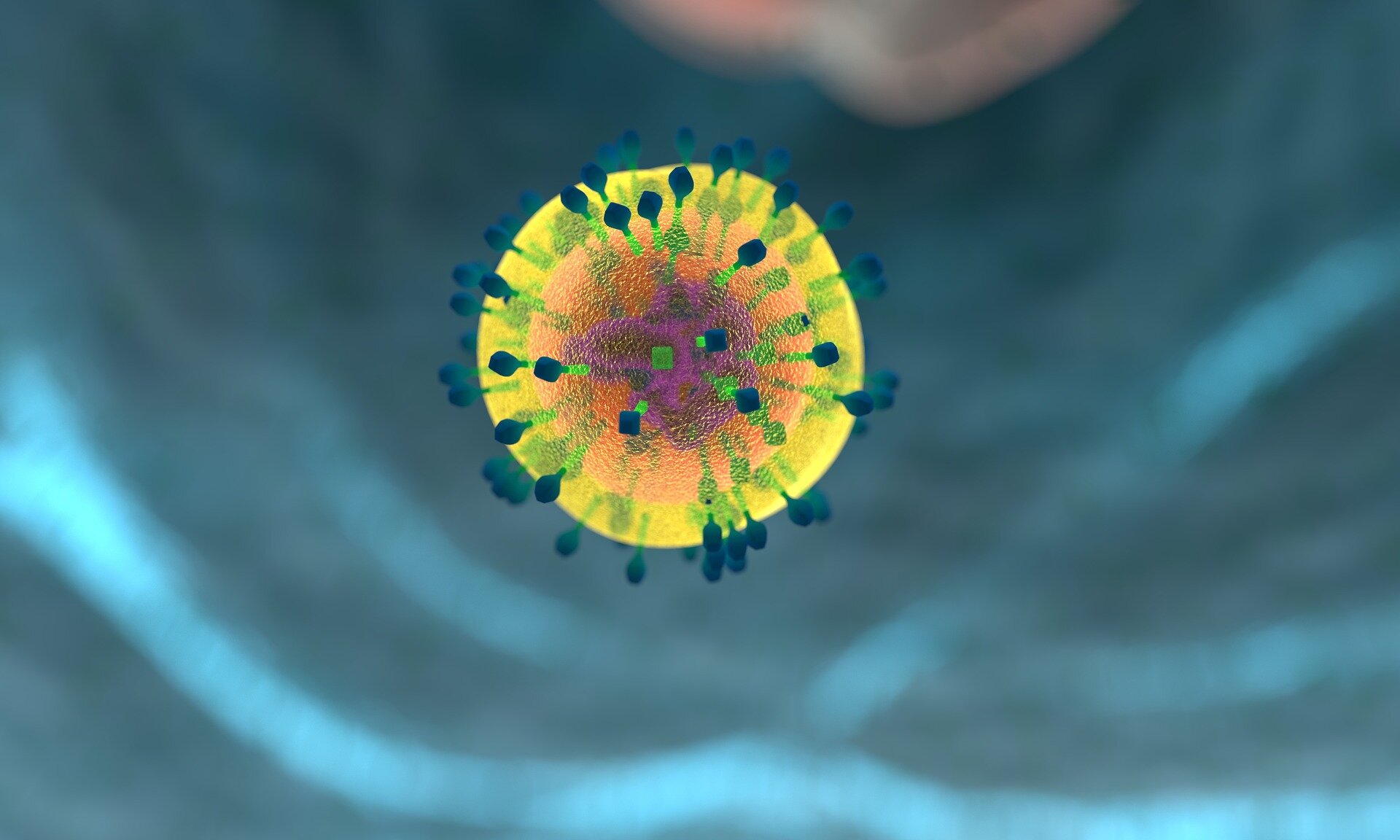
What causes us to age? New “clocks” developed by researchers could assist level to the solutions. Investigators from Brigham and Girls’s Hospital, a founding member of the Mass Basic Brigham well being care system, unveil a brand new type of epigenetic clock—a machine studying mannequin designed to foretell organic age from DNA construction.
The novel mannequin distinguishes between genetic variations that gradual and speed up growing older, predicts organic age and evaluates anti-aging interventions with elevated accuracy. Outcomes are revealed in Nature Growing older.
“Earlier clocks thought of the connection between methylation patterns and options we all know are correlated with growing older, however they do not inform us which components trigger one’s physique to age sooner or slower. We now have created the primary clock to differentiate between trigger and impact,” mentioned corresponding writer Vadim Gladyshev, Ph.D., a principal investigator within the Division of Genetics at BWH. “Our clocks distinguish between modifications that speed up and counteract growing older to foretell organic age and assess the efficacy of growing older interventions.”
Growing older researchers have lengthy acknowledged the hyperlink between DNA methylation—alterations to our genetic construction that form gene operate—and its affect on the growing older course of. Notably, particular areas of our DNA, often known as CpG websites, are extra strongly related to growing older. Whereas way of life decisions, like smoking and food regimen, affect DNA methylation, so does our genetic inheritance, explaining why people with comparable existence could age at totally different charges.
Current epigenetic clocks predict organic age (the precise age of our cells slightly than chronological) utilizing DNA methylation patterns. Nonetheless, till now, no present clocks have distinguished between methylation variations that trigger organic growing older and people merely correlated with the growing older course of.
Utilizing a big genetic knowledge set, first writer Kejun (Albert) Ying, a graduate pupil within the Gladyshev lab, carried out an epigenome-wide Mendelian Randomization (EWMR), a method used to randomize knowledge and set up causation between DNA construction and observable traits, on 20,509 CpG websites causal to eight aging-related traits.
The eight aging-related traits included lifespan, excessive longevity (outlined as survival past the ninetieth percentile), well being span (age at first incidence of main age-related illness), frailty index (a measure of 1’s frailty primarily based on the buildup of well being deficits throughout their lifespan), self-rated well being, and three broad aging-related measurements incorporating household historical past, socioeconomic standing, and different well being components.
With these traits and their related DNA websites in thoughts, Ying created three fashions, termed CausAge, a basic clock that predicts organic age primarily based on causal DNA components, and DamAge and AdaptAge, which embody solely damaging or protecting modifications. Investigators then analyzed blood samples from 7,036 people ages 18 to 93 years previous from the “Technology Scotland Cohort” and finally skilled their mannequin on knowledge from 2,664 people within the cohort.
With these knowledge, researchers developed a map pinpointing human CpG websites that trigger organic growing older. This map permits researchers to determine biomarkers causative to growing older and consider how totally different interventions promote longevity or speed up growing older.
Scientists examined their clocks’ validity on knowledge collected from 4,651 people within the Framingham Coronary heart Examine and the Normative Growing older Examine. They discovered that DamAge correlated with adversarial outcomes, together with mortality, and AdaptAge correlated with longevity, suggesting that age-related injury contributes to the chance of demise whereas protecting modifications to DNA methylation could contribute to an extended lifespan.
Subsequent, they examined the clocks’ potential to evaluate organic age by reprogramming stem cells (remodeling specialised cells, like pores and skin cells, again right into a youthful, much less outlined state the place they will grow to be varied forms of cells within the physique). When making use of the clocks to the newly remodeled cells, DamAge decreased, indicating a discount in age-related injury throughout reprogramming, whereas AdaptAge didn’t present a selected sample.
Lastly, the group examined their clocks’ efficiency in organic samples from sufferers with varied power circumstances, together with most cancers and hypertension, in addition to samples broken from way of life decisions like smoking cigarettes. DamAge constantly elevated in circumstances related to age-related injury, whereas AdaptAge decreased, successfully capturing protecting variations.
“Growing older is a fancy course of, and we nonetheless have no idea what interventions towards it really work,” mentioned Gladyshev. “Our findings current a step ahead for growing older analysis, permitting us to extra precisely quantify organic age and consider the power of novel growing older interventions to extend longevity.”
Extra info:
Kejun Ying et al, Causality-enriched epigenetic age uncouples injury and adaptation, Nature Growing older (2024). DOI: 10.1038/s43587-023-00557-0
Brigham and Girls’s Hospital
Quotation:
New epigenetic clocks reinvent how we measure age (2024, February 14)
retrieved 14 February 2024
from
This doc is topic to copyright. Aside from any truthful dealing for the aim of personal examine or analysis, no
half could also be reproduced with out the written permission. The content material is offered for info functions solely.







